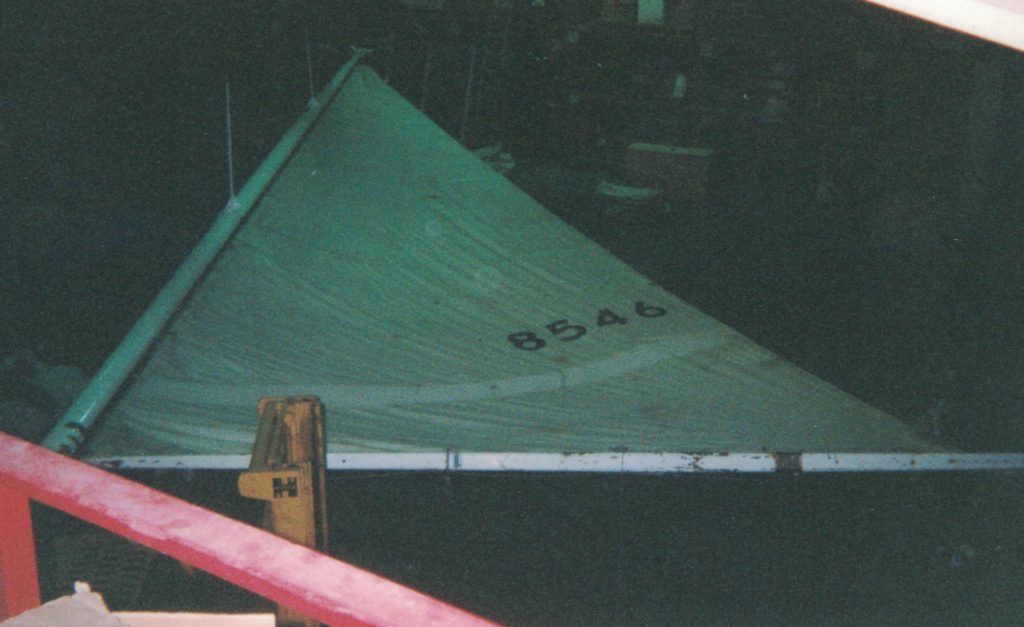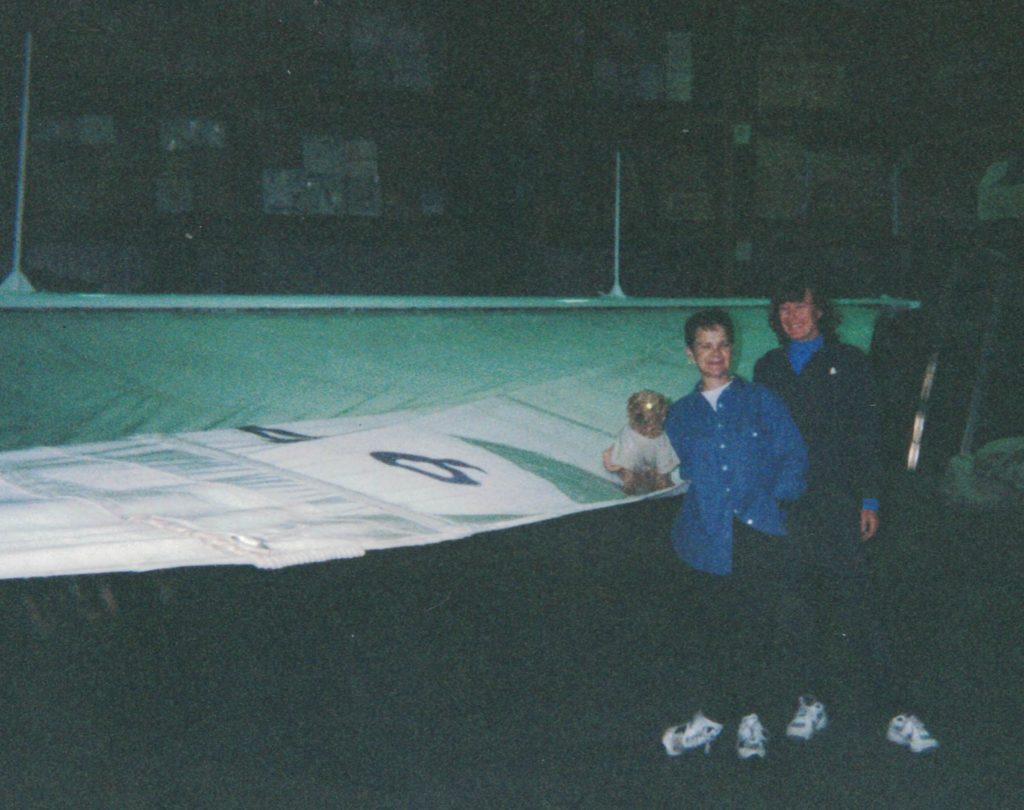By 1997 I was to the point of needing to make some decisions about how to rig the boat and how to handle sails. I was starting to put cleats and winches back on the boat, but I needed to make sound decisions about how to lay out the deck. Not to mention the lead time needed by the sail maker so that my order might be ready when we were. The time had come to buy sails.
I like telling this story but I am going to keep it short because there really isn’t much to tell about anything I actually did. Mostly I am going to sing praises of what other did for me. I contacted a number of sail makers. I got quotes on everything from fully battened mains made of mylar to basic dacron sails. I could have really screwed everything up here by making the wrong choices and I didn’t have the experience I needed to sort it out. It was when I contacted Port Townsend Sails and met Carol Hasse that things started coming together. I could devote an entire page to singing praises for Hasse and her crew. What I got when she came to town was a full on consultation, as well as a seminar on sails, sail handling and seamanship.
The rig wasn’t in the boat. We crawled around on the deck inside the cocoon talking about sails and sail handling. But we needed to measure the rig, if for no other reason than to get the angle between the raked mast and the boom correct. So of course we measured the rig out of the boat. We stretched it out in a warehouse with blocks and tackles to measure it. You can’t imagine the energy that Hasse brought to this project. In my mind she will always be “Hurricane Hasse”. Not because of any destructive nature but because of the energy with which she blew into my life. The photos below were taken the day we stretched out the mainsail in the warehouse. They are lousy photos but I’m going to share them anyway. This is a very unusual approach to measuring a rig and we were lucky to find someone who would work with us this closely toward our goals.


Hasse and her crew at Port Townsend Sails are legendary for a reason. A sail plan was developed, quotes were given and accepted. Because of the time spent in Juneau I had a plan as to how to lay out the deck and what gear I wanted. But I needed standing rigging as well.
I turned to Port Townsend and the community’s wealth of craftsmen again for help with the rigging. Brion Toss is legendary in his trade. His rigging loft is just below Hasse’s sail loft overlooking the Point Hudson Marina. Brion offers rigging seminars on a regular schedule, which of course I was out of sync with. It was late in ’97 by the time I got in touch with him and there were no seminars on the schedule. I talked to him about the idea of coming to Juneau to rig a boat. It wasn’t something he was enthusiastic about. Or perhaps it was I who wasn’t enthusiastic about paying for what it would cost. Either way, the idea suffered from a number of logistical problems. I asked him if he would give me a private seminar. It took a day or two to work this out, but he gave me a figure for what he would charge and I jumped on the opportunity. I’ve never been sorry. This is like the old saying about giving a man a fish or teaching him to fish. I was being offered an opportunity to go fishing with an expert fisherman.
This isn’t something that Brion was used to doing and frankly I have no clue whether you could convince him to do it again. For that reason I will keep the fee to myself. My friend upstairs, (by that I mean Hasse), might have had influence on the outcome. I don’t know. What I got was two intensive days of talking about rig design with focus on my boat. There were hands-on lessons on how to splice rope, how to install swageless terminals and how to examine and tune a rig. We discussed safety aloft and we walked the harbor looking at rigs in various boats to help me develop a critic eye. It’s some of the most fun I’ve ever had and the lessons learned not only allowed me to come home and rig my own boat (to Brion’s specifications), but in the year’s since I have altered it with confidence, kept it tuned and helped others with similar tasks. It was money well spent.
I came home from that trip with a splicing wand, a rigging gauge and a copy of Brion’s book, The Rigger’s Apprentice. I will, without shame, give it a plug here. It is available on Amazon or through briontoss.com. It should be part of every sailor’s library and kept close at hand. This book, along with Calder’s, Boatowner’s Mechanical and Electrical Manual are two books that always go sailing with me. I have friends who think I know everything because I consult these books before offering opinions. They make me look a lot smarter than I am.
While all of this was going on a design for our spinnaker was being sought. A friend of ours named Jeanne Gamble, who specializes in Alaskan art drew up the swan that you have seen on the homepage here. The namesake of our boat will forever be linked to the image of a swan. Jeanne’s interpretation of the swan incorporating some elements from Alaska Native culture is just brilliant. We made photo copies of it and used colored pencils to try different color combinations. We lived for months with dozens of these taped up on our kitchen cabinets. One was finally chosen and submitted to Port Townsend Sails. The project was handed to Gae Pilon, who typically does not do other’s designs but was taken by the image. In her own words, she won’t do it again. It nearly drove her mad getting all the pieces to fit without destroying the shape of the sail. We are grateful to both of these artists. The result is nothing short of dramatic. Functional art if ever there was.
I had an expected delivery date of June of 1998. I had a lot of work to do during the winter of ’97 and spring of ’98 to get ready. Invitations to the Wilsons had been issued. The frenzy of work is just a blur now. The next big step was to haul out the boat for paint and getting her ready to step the mast.
Next: Finishing?
Previous: Cockpit and Deck